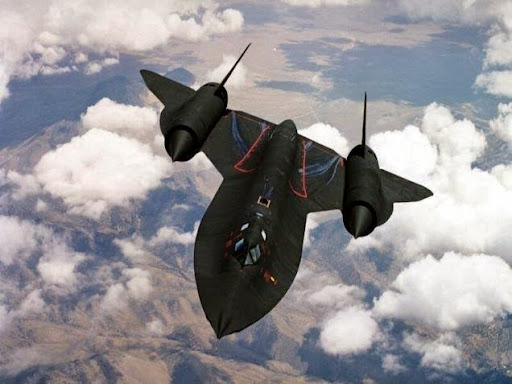Donald W Mccoy
age ~49
from Broken Arrow, OK
- Also known as:
-
- Donald M Ccoy
- Donald Mc Coy
- Donald Mc
- Phone and address:
- 2500 W Natchez St, Broken Arrow, OK 74011
Donald Mccoy Phones & Addresses
- 2500 W Natchez St, Broken Arrow, OK 74011
- Pryor, OK
- Kenosha, WI
- Grayslake, IL
- Oklahoma City, OK
- Antioch, IL
- Salem, WI
- 113 W Lilac Ct, Oklahoma City, OK 73110 • 4054553173
Work
-
Position:Food Preparation and Serving Related Occupations
Ranks
-
Licence:Michigan - Active And In Good Standing
-
Date:2008
Specialities
Employment & Labor • Civil Litigation; Criminal; Employee Benefits; Labor and Employment; Criminal Law; Labor and Employment Law • Business • Estate Planning • Civil Litigation • Criminal • Employee Benefits
Medicine Doctors

Donald L. Mccoy
view sourceSpecialties:
Internal Medicine
Work:
Nature Coast Medical Group
130 SW 7 St, Williston, FL 32696
3525285801 (phone), 3525286019 (fax)
130 SW 7 St, Williston, FL 32696
3525285801 (phone), 3525286019 (fax)
Education:
Medical School
Nova Southeastern University College of Osteopathic Medicine
Graduated: 1986
Nova Southeastern University College of Osteopathic Medicine
Graduated: 1986
Languages:
English
Description:
Dr. McCoy graduated from the Nova Southeastern University College of Osteopathic Medicine in 1986. He works in Williston, FL and specializes in Internal Medicine.
Us Patents
-
Cable Rack For Power And Communication Cables
view source -
US Patent:7140500, Nov 28, 2006
-
Filed:Oct 28, 2004
-
Appl. No.:10/975659
-
Inventors:Donald P. McCoy - Lake Forest IL, US
-
Assignee:Underground Devices, Inc. - Northbrook IL
-
International Classification:A47F 7/00
-
US Classification:211 601
-
Abstract:A cable rack suitable for underground service is made from at least one plastic molded stanchion and a cross-arm. A height of the rack may be adjusted by stacking the stanchions lengthwise, in tandem, and by trimming the stanchions as desired. The best places in the stanchion for trimming are indicated with molded-in visual indicators. The cross-arms, which may be used to span two stanchions, are designed so that a user receives a visual indication from the stanchion when the cross-arm is fully seated and ready to receive a load of communications cables, power cables, or both. In a preferred embodiment, each stanchion has an aperture for attaching to a wall near a top of the stanchion. Plastic cable ties may be used to secure small cables to the stanchions without a cross arm, and may also be used to lock cross arms into the stanchions.
-
Side Loading Conduit Spacer
view source -
US Patent:7806629, Oct 5, 2010
-
Filed:May 11, 2007
-
Appl. No.:11/747739
-
Inventors:Donald P. McCoy - Lake Forest IL, US
-
Assignee:Underground Devices, Inc. - Northbrook IL
-
International Classification:F16L 7/00
F16L 3/02
F16L 3/22 -
US Classification:4051844, 4051835, 405184, 211 601, 211 70, 248 681, 248 742
-
Abstract:Apparatuses and methods are disclosed for mounting conduits within spacers for underground installation. Spacers for side loading of conduit, as opposed to older methods of end loading, allow construction workers to easily assemble conduits to a plurality of spacers above-ground. The side loading technique uses spacers having bores that communicate with each other, preferably in a radial manner. Thus, a first plurality of conduits may be assembled or mounted to an inner portion of the spacers and then at least a second plurality of conduits may be assembled and mounted to an outer portion of the spacers. Cables later pulled through the conduits are typically those used for the transmission of electricity or communication signals. Other embodiments use bores that do not communicate with each other but are secured to the spacers with an outer banding saddle.
-
Conduit Spacer For Duct Banks
view source -
US Patent:7942371, May 17, 2011
-
Filed:Apr 30, 2010
-
Appl. No.:12/770959
-
Inventors:Donald P. McCoy - Lake Forest IL, US
-
Assignee:Underground Devices, Inc. - Northbrook IL
-
International Classification:F16L 3/22
-
US Classification:248 681
-
Abstract:Conduit spacers useful in preparing duct banks are disclosed. The conduit spacers are designed for attachment to each other in vertical and horizontal combinations, that is, they may be arranged in side-by-side arrays, up-and-down arrays, or arrays that are both side-to-side and up-and-down. Thus, the conduit spacers include both vertical and horizontal restraints or interlocks. The vertical interlocks are achieved by the use of tapered tabs and tapered slots, both the tabs and the slots having tapers in the same horizontal direction. Horizontal interlocks are made by the use of rails and matching grooves in the sides of the spacers. Thus, both vertical and horizontal interlocks are achieved by assembling the ducts in a horizontal direction, side-by-side as desired for width, and up-and-down as desired for height. The number and length of conduits and the length of the duct banks needed dictate how many spacers are needed.
-
Ult Cable Support System With Saddles
view source -
US Patent:8517186, Aug 27, 2013
-
Filed:Jul 23, 2012
-
Appl. No.:13/556084
-
Inventors:Donald P. McCoy - Lake Forest IL, US
-
Assignee:Underground Devices, Inc. - Worthbrook IL
-
International Classification:A47F 1/04
-
US Classification:211 601, 211193, 248 73
-
Abstract:A cable rack arm and support system suitable for underground power and communication service is made from reinforced non-metallic polymers that will not rust or corrode. A cable rack arm up to thirty inches long may be compression molded with long glass fibers in a polyester or vinylester matrix. Each cable rack arm is securely mounted to a non-metallic stanchion that may be made from a reinforced, pultruded composite material. Nonmetallic pins may be used to secure the cable rack arms to the stanchions. Each cable rack arm then supports one or more cables in cable saddles that are snap-fit atop the arm, thus keeping the cables accessibly organized in a manhole, tunnel or vault. Each saddle may include elastomeric dampening material to reduce shock and vibration in the mechanical and electrical environment in underground tunnels, vaults and manholes.
-
Ult Cable Support System
view source -
US Patent:8550259, Oct 8, 2013
-
Filed:Jul 23, 2012
-
Appl. No.:13/556070
-
Inventors:Donald P. McCoy - Lake Forest IL, US
-
Assignee:Underground Devices, Inc. - North Brook IL
-
International Classification:A47F 7/00
-
US Classification:211 131, 211 601, 211193, 248 73
-
Abstract:A cable rack arm and support system suitable for underground power and communication service is made from reinforced non-metallic polymers that will not rust or corrode. A cable rack arm up to thirty inches long may be compression molded with long glass fibers in a polyester or vinylester matrix. Each cable rack arm is securely mounted to a non-metallic stanchion that may be made from a reinforced, pultruded composite material. Nonmetallic pins may be used to secure the cable rack arms to the stanchions. Each cable rack arm then supports one or more cables in cable saddles that are snap-fit atop the arm, thus keeping the cables accessibly organized in a manhole, tunnel or vault. Each saddle may include elastomeric dampening material to reduce shock and vibration in the mechanical and electrical environment in underground tunnels, vaults and manholes.
-
Cable Support System
view source -
US Patent:8567734, Oct 29, 2013
-
Filed:Sep 14, 2009
-
Appl. No.:12/584864
-
Inventors:Donald P. McCoy - Lake Forest IL, US
-
Assignee:Underground Devices, Inc - North Brook IL
-
International Classification:A47G 29/02
E04G 3/20
E06B 7/28 -
US Classification:248250, 248235, 248247, 211 601, 211186, 211189
-
Abstract:A cable rack arm and support system suitable for underground power and communication service is made from a non-metallic polymer that will not rust or corrode. The cable rack arm is adapted for mounting to existing underground stanchions or for stanchions of a more modern design. Each cable rack arm is securely mounted to the stanchion. Each cable rack arm then supports one or more cables in cable rests or saddles molded atop the arm, thus keeping the cables accessibly organized in a manhole, tunnel or vault. Plastic cable ties may be used to secure the cables to the cable rack arms. Nonmetallic pins may also be used to secure the cable rack arms to the stanchions. The stanchions may be made of nonmetallic composite material that includes a fiberglass cross-layered knitted apertured mat for increased strength.
-
Non-Metallic Support Stanchion
view source -
US Patent:8596590, Dec 3, 2013
-
Filed:Oct 9, 2009
-
Appl. No.:12/587610
-
Inventors:Donald P. McCoy - Lake Forest IL, US
-
Assignee:Underground Devices, Inc. - Northbrook IL
-
International Classification:F16L 3/22
-
US Classification:248 681, 248243, 211 601, 211193
-
Abstract:A cable rack arm and support system suitable for underground power and communication service is made from a non-metallic polymer that will not rust or corrode. The cable rack arm is adapted for mounting to existing underground stanchions or for stanchions of a more modern design. Each cable rack arm is securely mounted to the stanchion. Each cable rack arm then supports one or more cables in cable rests or saddles molded atop the arm, thus keeping the cables accessibly organized in a manhole, tunnel or vault. Plastic cable ties may be used to secure the cables to the cable rack arms. Nonmetallic pins may also be used to secure the cable rack arms to the stanchions. The stanchions may be made of nonmetallic composite material that includes a fiberglass cross-layered knitted apertured mat for increased strength.
-
Non-Metallic Support Stanchion
view source -
US Patent:20140026393, Jan 30, 2014
-
Filed:Sep 28, 2013
-
Appl. No.:14/040663
-
Inventors:Donald P. McCoy - Lake Forest IL, US
-
Assignee:UNDERGROUND DEVICES, INC. - Northbrook IL
-
International Classification:F16L 3/22
F16M 13/02 -
US Classification:2952501, 248 65, 29428
-
Abstract:A cable rack arm and support system suitable for underground power and communication service is made from a non-metallic polymer that will not rust or corrode. The cable rack arm is adapted for mounting to existing underground stanchions or for stanchions of a more modern design. Each cable rack arm is securely mounted to the stanchion. Each cable rack arm then supports one or more cables in cable rests or saddles molded atop the arm, thus keeping the cables accessibly organized in a manhole, tunnel or vault. Plastic cable ties may be used to secure the cables to the cable rack arms. Nonmetallic pins may also be used to secure the cable rack arms to the stanchions. The stanchions may be made of nonmetallic composite material that includes a fiberglass cross-layered knitted apertured mat for increased strength.
Name / Title
Company / Classification
Phones & Addresses
Owner
McCoy Drywall
Drywall/Insulating Contractor
Drywall/Insulating Contractor
2005 W Sw 89 St, Mustang, OK 73064
4053762613
4053762613
Vice President
VOWELL CONSTRUCTION COMPANY
General Manager
Underground Devices, Inc
Mfg Plastic Materials/Resins · Hardware Mfg
Mfg Plastic Materials/Resins · Hardware Mfg
3304 Commercial Ave, Northbrook, IL 60062
420 Academy Dr, Northbrook, IL 60062
8472059000, 8472059004, 8008002118
420 Academy Dr, Northbrook, IL 60062
8472059000, 8472059004, 8008002118
AG RESOURCES, LLC
BIN RESOURCES, LLC
FRONTIER GROUP, LLC
Owner
McCoy Drywall Inc
Drywall/Insulating Contractor
Drywall/Insulating Contractor
8921 S Richland Rd, Mustang, OK 73064
4053762655
4053762655
Incorporator
CLEARVIEW GOLF COURSE, INC
Resumes

Donald Mccoy
view sourcePosition:
Maintenance Manager at LATTA Real Estate Service Ince
Location:
United States
Work:
LATTA Real Estate Service Ince since 2007
Maintenance Manager
Maintenance Manager

Radiation Therapist At Poudre Valley Radiation Oncology
view sourceLocation:
United States
Industry:
Hospital & Health Care
License Records
Donald Mccoy
License #:
2701020316
Category:
Contractor
Donald E Mccoy
License #:
38706 - Active
Category:
Tow Truck Operator (Consent Tow)
Expiration Date:
Apr 29, 2017
Isbn (Books And Publications)



Coming of Age: The United States during the 1920's and 1930's
view sourceAuthor
Donald R. McCoy
ISBN #
0140212450


Angry Voices: Left-Of-Center Politics in the New Deal Era
view sourceAuthor
Donald R. McCoy
ISBN #
0804614318

National Archives: America's Ministry of Documents, 1934-1968
view sourceAuthor
Donald R. McCoy
ISBN #
0807813273
Lawyers & Attorneys

Donald J. Mccoy - Lawyer
view sourceLicenses:
Michigan - Active And In Good Standing 2008

Donald Mccoy - Lawyer
view sourceOffice:
Donald R. McCoy PA
Specialties:
Employment & Labor
Civil Litigation; Criminal; Employee Benefits; Labor and Employment; Criminal Law; Labor and Employment Law
Business
Estate Planning
Civil Litigation
Criminal
Employee Benefits
Civil Litigation; Criminal; Employee Benefits; Labor and Employment; Criminal Law; Labor and Employment Law
Business
Estate Planning
Civil Litigation
Criminal
Employee Benefits
ISLN:
905017783
Admitted:
1969
Law School:
University of Missouri Columbia School of Law, J.D., 1969
Googleplus

Donald Mccoy
Work:
Pittsburgh Healthcare system - Police

Donald Mccoy

Donald Mccoy

Donald Mccoy

Donald Mccoy

Donald Mccoy

Donald Mccoy

Donald Mccoy
Youtube
Myspace
Plaxo

Donald McCoy
view sourceDuham, NCIBM

Donald McCoy
view sourceDirector of Technology at Constellation
Flickr
Classmates

Donald McCoy (95)
view sourceSchools:
Creekside High School Fairburn GA 1991-1995
Community:
Katie Adams, Jeff Scoggins

Donald McCoy
view sourceSchools:
Carver High School Carrollton GA 1963-1967
Community:
Carrie Colella, Robert Crowder, Donna Huckeba

Donald McCoy
view sourceSchools:
Crestwood High School Chesapeake VA 1965-1969
Community:
Johnny Clemons, Chester Cuffee, Vivian Porter, James Holmes, Jasper Banks, Edward Adams

Donald McCoy
view sourceSchools:
Ellettsville High School Ellettsville IN 1958-1962
Community:
Robert Murphy, Richard Eppley, Jack Knight

Donald McCoy
view sourceSchools:
Valley High School West Terre Haute IN 1952-1956
Community:
Larry Williams, Donald Emrick, Darlene Mallory, Vickie Whitesell

Donald McCoy
view sourceSchools:
Thomas A. Edison Elementary School Altadena CA 1941-1947
Community:
Dennis Reevers, Bill Weinstock, Dan Pomeroy

Donald McCoy
view sourceSchools:
Phelps Junior & Senior High School Phelps KY 1975-1979
Community:
Emogene Fugate, Joyce Reeves

Donald McCoy
view sourceSchools:
Larue County High School Hodgenville KY 1970-1974
Community:
Joyce Reeves
Get Report for Donald W Mccoy from Broken Arrow, OK, age ~49




















